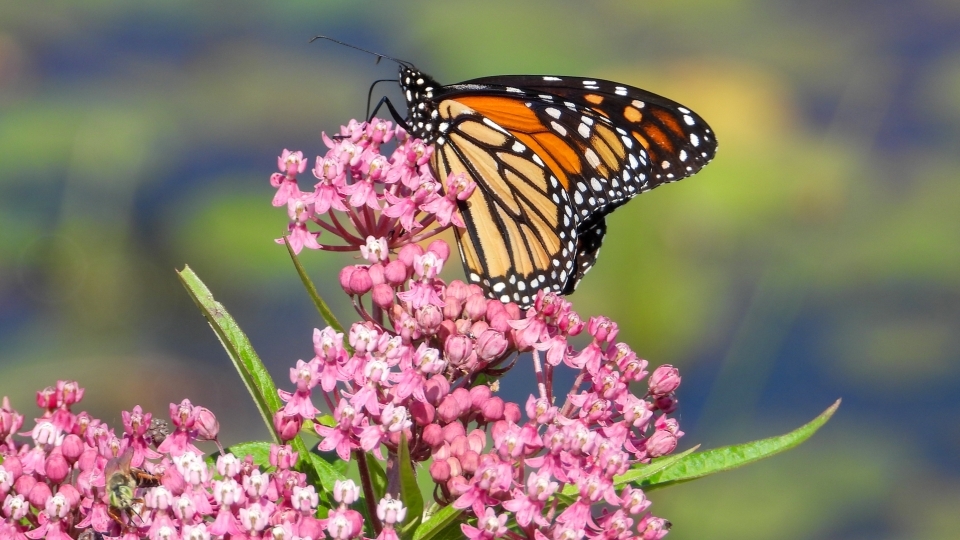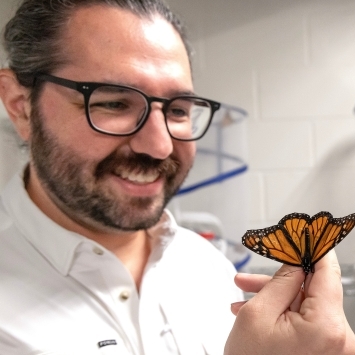
Want to help Monarch Butterflies? Essential Advice for Carolina Gardeners From Biologist Scott Villa
April 22, 2025
- Author
- Jay Pfeifer

With warm weather returning, gardeners across the Carolinas are thinking about planting butterfly gardens; refuges for the fluttering, delicate insects that herald the return of summer.
And for many gardeners, that means cultivating milkweed, the plant that monarch butterflies depend upon. Monarch caterpillars feed exclusively on the leaves of the milkweed plant and monarchs will only lay eggs on milkweed. The strange weed that seeps a sticky white sap is truly the linchpin of the monarch species.
But not just any milkweed will do.
Scott Villa, an evolutionary biologist who studies monarch butterflies, leads workshops on building pollinator and butterfly gardens specifically for the flora and fauna in North Carolina.
He offers one absolutely crucial tip for butterfly gardeners: Plant native milkweed.
Look for swamp milkweed (Asclepias incarnata), a popular, widely available species. This native species dies off in the winter – which is actually an essential stage of the natural life cycle of monarchs.
Mail-order milkweed seeds are frequently invasive species that continue to grow through the winter. And though it’s counterintuitive, year-round availability actually harms the greater monarch population.

Invasive species of milkweed that don’t die back in winter confuse the insects. When milkweed is abundant during the winter, they often don’t migrate to their winter habitat in Mexico and that has several downstream effects for population health.
When monarchs don’t migrate, their caterpillars can hatch at the wrong time of the season, reducing the population of young butterflies.
Invasive milkweed also encourages a phenomenon known as “migratory dropout.”
“If food is plentiful throughout the year, the monarchs can forego the grueling trans-continental migration to Mexico. This is counterintuitive but that weakens the greater population. The migration culls weak and sick butterflies, resulting in a heartier population.
“Without that natural selection,” Villa said, “the fragmented butterfly population can be sicklier and generally more susceptible to disease and parasites.”
Villa also advises scattering milkweed seeds over a wide area. Milkweed can attract pests like aphids, but their population growth can be minimized when milkweed is not concentrated in garden beds or containers.



